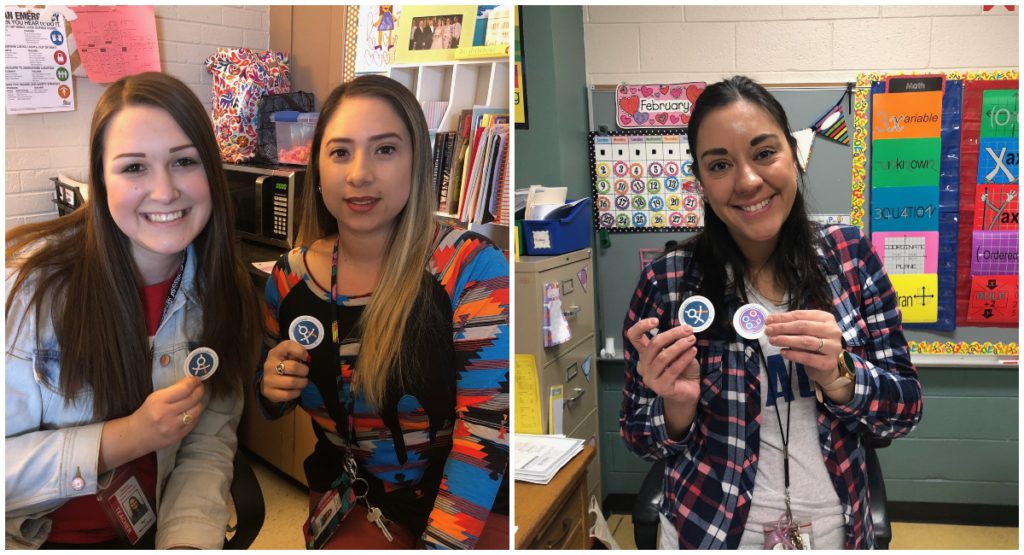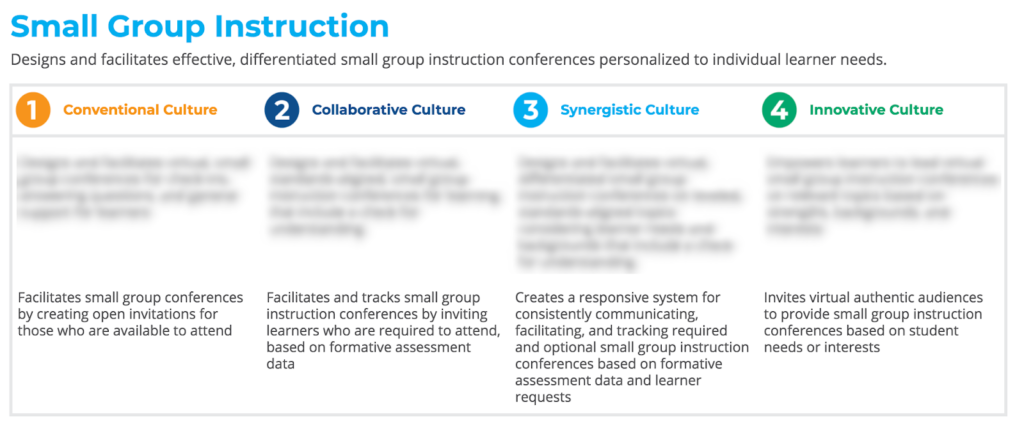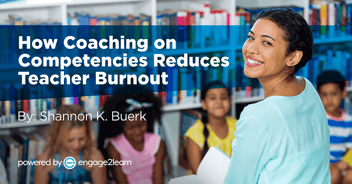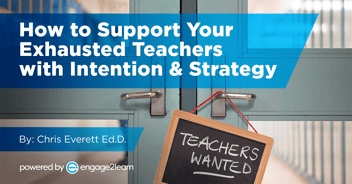Your Road Map for High-Impact Teacher Support
Being a teacher is hard work. Teachers need summer to refresh and recharge. Even those who work year-round typically spend the summer reorganizing, finalizing plans for the upcoming year, and looking forward to the fresh start we count on fall to bring.
The 2021-2022 school year brought with it another wave of challenges, including but not limited to surges in COVID-19 variants, new book bans and legislation limiting what public school teachers can teach in the classroom, and a rapidly growing teacher shortage. Amidst all of this, there’s a very good chance that teachers were unable to recharge as often as they needed to throughout the year, which means they aren’t refreshed. They’re exhausted!
Teacher Support at Scale
When you’re running on fumes, an already challenging job can feel overwhelming – sometimes impossible. Here you are, walking up to the starting line of a marathon on the heels of an all-nighter, expected to come up with a strategy to win the race. The terrain is unknown. All of the training you’ve done to get to this point feels like it isn’t enough.
Teachers, the truth of it is, there really is no way for you to be fully prepared for the marathon of teaching. There will always be challenges hiding behind the bends and turns that you won’t be aware of until they’re right in front of you. You’re going to need the compassionate, supportive people cheering you on and the right gear to get you over the finish line, and that’s okay! You’re not alone. Many, if not all, of your fellow educators are in the exact same place right now.
Luckily, contrary to popular belief, teaching is not a solo endeavor. Teaching is a team sport.
| RELATED: 4 Ways to Support Your Teachers with Intention & Strategy |
So, how can district leaders and administrators provide the kind of high-impact teacher support that gets teachers and students where they need to be? The kind of support educators need right now is something that is actionable – something they can apply right away. They need clear behaviors. They need concrete examples of what this work looks like. They need scaffolded support that will meet them where they are and show them how to take it to the next level: a road map to navigate the race route.
This is where Buerk Rubrics come in. Most of the time, when educators think of the word rubric, we think of assessing an end product. Buerk Rubrics are different. Buerk Rubrics level learning and standards by providing a way to identify where individual learners are on their personalized path toward mastery and what they need to improve upon. They provide a road map for growth to be used during lessons to inform ongoing learning rather than after lessons to assess what was learned. And as you’ll learn below, these rubrics are not just tools for students!
Utilizing Rubrics for Teacher Support
Resulting from careful, curated research and thousands of coaching hours with nearly 79,000 public school teachers since 2011, customizable Buerk Rubrics (available in eSuite) help teachers define and communicate the behaviors that lead to student growth in what we call Life-Ready Skills. These rubrics can be easily adjusted to fit in-person, blended, and/or fully-remote learning environments, ensuring that a change in the learning environment does not mean that learners fall behind. Additionally, teachers can find research and utilize rubrics that center on culturally relevant teaching (CRT) to guide them through designing inclusive and engaging lessons.
With the support and guidance of the Buerk Rubric model, teachers can confidently design and implement instructional methods proven to engage students, mitigate disrupted learning, and grow Life-Ready learners – expertly navigating the terrain of public education.
For example, suppose a teacher is trying to determine how best to facilitate small group instruction. It could be a seasoned teacher navigating a new remote setting, or it could be a new teacher facilitating in-person learning. We’ll use remote learning for this example.
When you think of small group instruction, you may think of a group of learners sitting with a teacher at a table while the rest of the class is collaborating or working independently. An overwhelmed teacher can’t begin to picture how that looks in a remote environment, but with a leveled rubric, the teacher can easily identify their starting point and work from there. Let’s walk through a strand from the Small Group Instruction Rubric to visualize this kind of high-impact teacher support.
Level 1 of the rubric describes offering optional small group virtual sessions to check in and answer student questions, a great starting point for a teacher new to virtual learning. Once the teacher has that down after a little practice, they’ll have the confidence to move on to the next level, continuing on their personal growth path.
Level 2 of the rubric then suggests using formative assessment data to invite students to specific small group sessions, a simple add-on to what the teacher mastered in level 1. Instead of an open invitation to small group instruction for all students, the teacher will be able to look at student data and determine who should be required to attend which instructional session for what purpose – a huge step toward differentiating instruction to meet each student where they are.
Because the rubric provides explicit step-by-step instructions, the teacher can approach each new level with the confidence, motivation, and preparedness to master and implement new skills at their own pace. Before you know it, a teacher who once didn’t know where to start suddenly has seamless systems for communication, facilitation, tracking attendance and growth, and incorporating learner input in place.
With the starting point and plan of action so clearly defined in the rubric, teachers have the kind of just-right support that inherently sets up them for success. With so many things weighing on teachers’ minds, the ease of this rubric reduces the burden of piecing together strategies from scratch, allowing teachers to invest their energy where it belongs: in their students’ learning and well-being.
Free Resource: DIY Buerk Rubric
BONUS: A crucial element to building a culture of long-lasting teacher support is prioritizing systems for celebrating teacher growth. Teachers are tired of empty, blanket praise. Acknowledging the individual’s hard work and accomplishments is vital in boosting morale and creating a sense of genuine appreciation.
Just as students earn points and grades for completing tasks and mastering standards, so should your teachers earn badges and recognition for their efforts and growth. Documenting and celebrating progress on leveled rubrics in eSuite makes this easy. For inspiration, check out how the Abilene Independent School District is utilizing the power of recognition for teacher support across their entire district.

A Rubric for Every Scenario
Below are five examples of the many rubrics designed for learner and teacher support available in GroweLab.
01: Social Emotional Learning
The Social Emotional Learning rubric allows teachers to guide themselves and their students on the path towards developing the kind of self-awareness and interpersonal skills that are required to thrive in studies, work, and relationships. These instructional practices are research-based and help teachers make the classroom a safe space that fosters accelerated learning and achievement for every student.
Standards: Self Regulation; Empathetic Awareness; Interpersonal Skills; Professional Accountability

02: Life Ready Best Practices*
The e2L Life Ready Best Practices are research-based instructional practices proven to facilitate student achievement, engagement, and life-ready skills. e2L has curated the 12 best instructional practices from over 1,500 meta-analyses and the most relevant research on culturally responsive pedagogy.
Standards: Assessment and Formative Feedback; Collaboration; Communication; Critical Analysis, Inquiry, Research; Culture, Environment, Professional Ethics; Differentiation & Scaffolding; Goal-Setting, Autonomy, Entrepreneurship; Problem-Solving, Creativity, Innovation; Reflection & Growth Mindset; Relevance & Authenticity; Small Group Instruction; Standards Alignment
*aligned to T-TESS
03: Life Ready Literacy Best Practices*
The e2L Life Ready Literacy Best Practices are research-based instructional practices proven to increase reading levels, classroom engagement, and growth in life-ready skills. e2L has curated the literacy best practices from over 1,500 meta-analyses and relevant research on literacy development.
Standards:
- Guided Reading: Assessment & Formative Feedback; Small Group Instruction; LRS: Professional Ethics
- Autonomous Literacy Practice: Differentiation & Scaffolding; Goal Setting, Autonomy, Entrepreneurship; LRS: Collaboration
- Shared Reading: Standards Alignment; Collaboration; LRS: Growth Mindset
- Interactive Read Aloud: Standards Alignment; Communication; LRS: Communication
- Writing: Goal Setting, Autonomy, Entrepreneurship; Small Group Instruction; LRS: Creativity
- Phonics/Word Study: Standards Alignment; Differentiation & Scaffolding; LRS: Critical Thinking
- Interactive Writing: Communication; Assessment & Formative Feedback
*aligned to Science of Teaching Reading
04: School Improvement Rubric
The School Improvement rubric spells out how to shift school culture for good, build capacity within current staff, transform teacher support, improve student behavior and attendance, and ensure accelerated student learning and growth in life-ready skills.
Standards: Strong School Leadership & Planning; Strategic Staffing; Positive School Culture; High-Quality Instructional Materials & Assessments; Effective Instruction
05: e2L Coach Rubric
The e2L Coach standards guide coaches on prioritizing administrator and teacher support as they create a culture of growth through goal-setting, assessment, and critical feedback. Instructional coaches learn how to accelerate growth and teacher support through systems thinking, collaboration, and modeling digital fluency.
Standards: Culture; Coaching Role; Coaching Process; Collaborative Partnerships; Systems Thinking; Professional Learning Expertise; Digital Fluency

GroweLab gives administrators, teachers, and coaches access to rubrics that take the guesswork out of strategy – the kind of support teachers really need right now. Rubrics serve as on-demand resources to explore, develop, and build upon ideas. They serve as a road map not just for engaging and accelerating learners but for transformative teacher support as well.
With comprehensive teacher support like this that can scale quickly, the possibilities for student and teacher growth are endless – no matter how rough or unknown the terrain might be.
To learn more about engage2learn’s teacher support services and tools, such as eSuite, leveled rubrics, job-embedded coaching, and more, schedule an appointment with our K-12 experts here.




